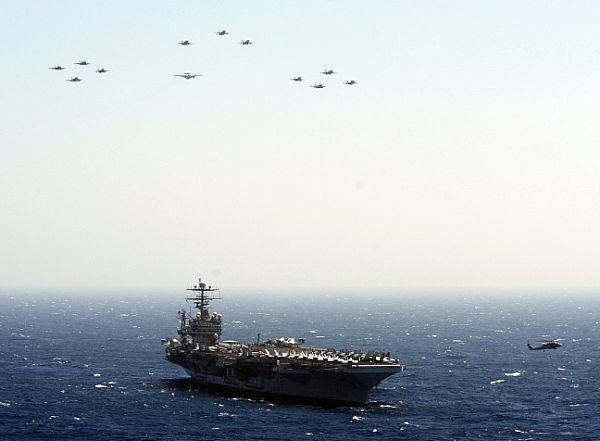The United States has moved new forces into the Gulf to keep strategic waterways open and strike deep within Iran in the event of a regional military escalation, the New York Times reported Tuesday.
The Times cited senior officials as saying the quiet build-up was aimed at reassuring Israel that Washington is serious about addressing Iran’s nuclear program and keeping the Straits of Hormuz — a key oil choke point — open.
“The message to Iran is, Don’t even think about it,'” it quoted a senior Defense Department official as saying.
“Don’t even think about closing the strait. We’ll clear the mines. Don’t even think about sending your fast boats out to harass our vessels or commercial shipping. We’ll put them on the bottom of the Gulf.”
The Navy has doubled the number of minesweepers in the region, to eight vessels, and stealthy F-22s and older F-15C warplanes have been deployed to regional bases to reinforce existing carrier strike groups, the Times said.
US President Barack Obama has sought to roll back Iran’s nuclear program though diplomatic means — ramping up sanctions to unprecedented levels in recent months — while not ruling out a military strike.
Western nations and Israel have accused Iran of seeking to develop nuclear weapons under the guise of a civilian uranium enrichment program, charges adamantly denied by Tehran.
Iran and the P5+1 group comprising the five UN Security Council permanent members (Britain, China, France, Russia and the United States) plus Germany plan to hold an experts-level meeting in Istanbul to discuss the dispute.
The talks were to take place between technical experts after three previous rounds earlier this year, at a more senior political level, failed to bridge the vast gap dividing the two sides.
Iran has threatened to close the strategic Strait of Hormuz at the entrance to the oil-rich Gulf if its nuclear program is targeted by air strikes.
That threat, repeated since December, helped propel oil prices to a four-year high of $128 for a barrel of Brent North Sea reference crude in early March.











